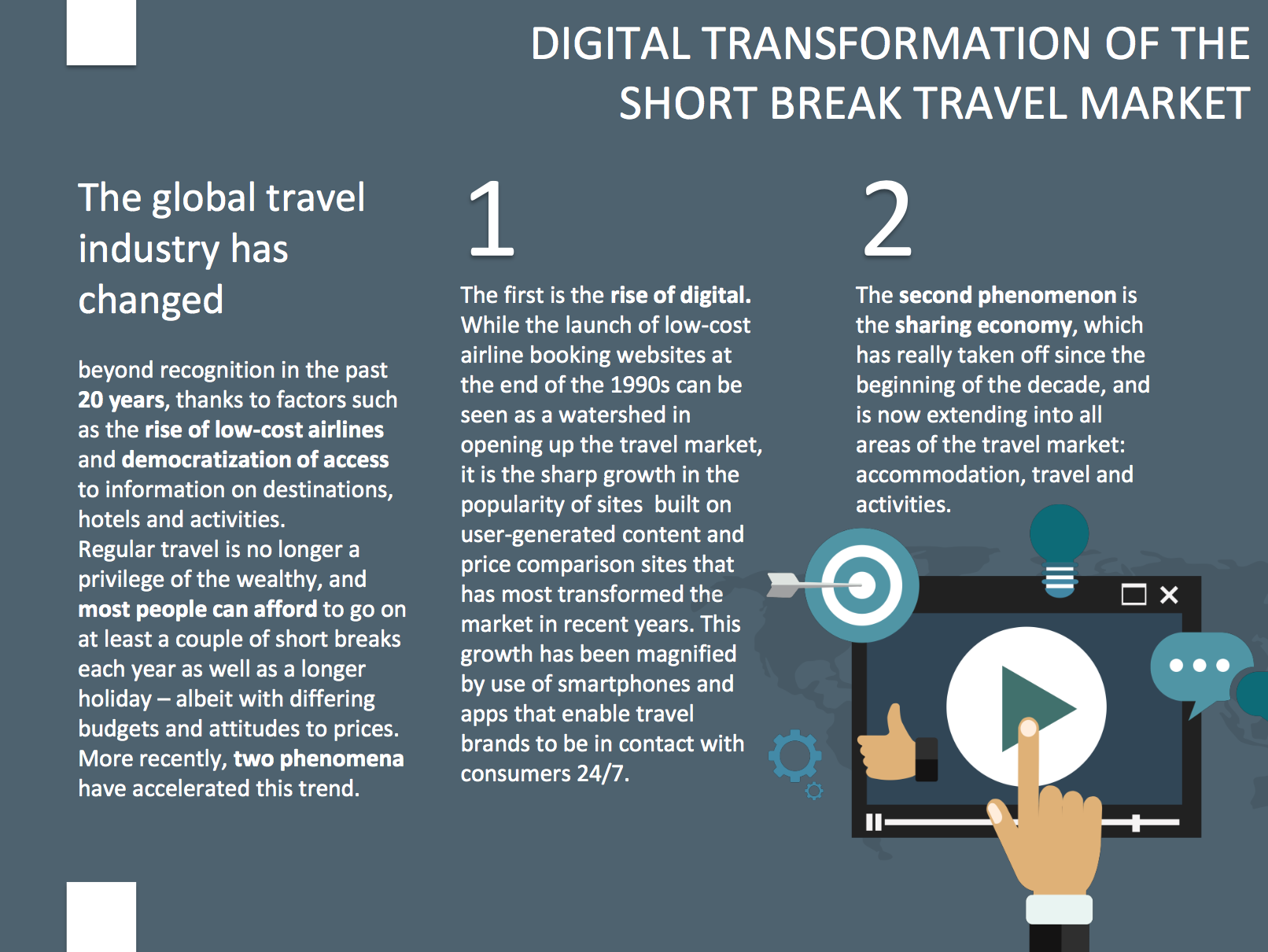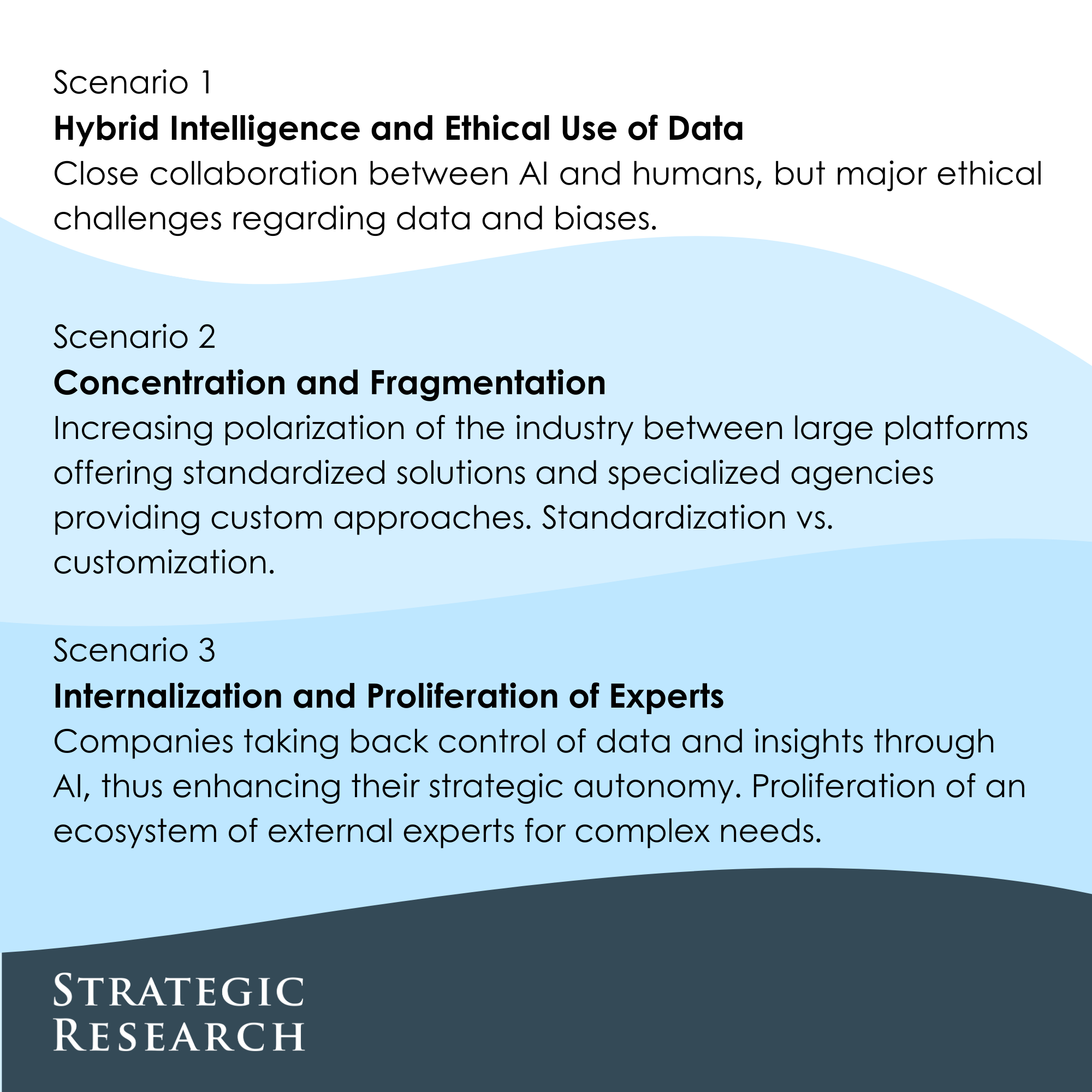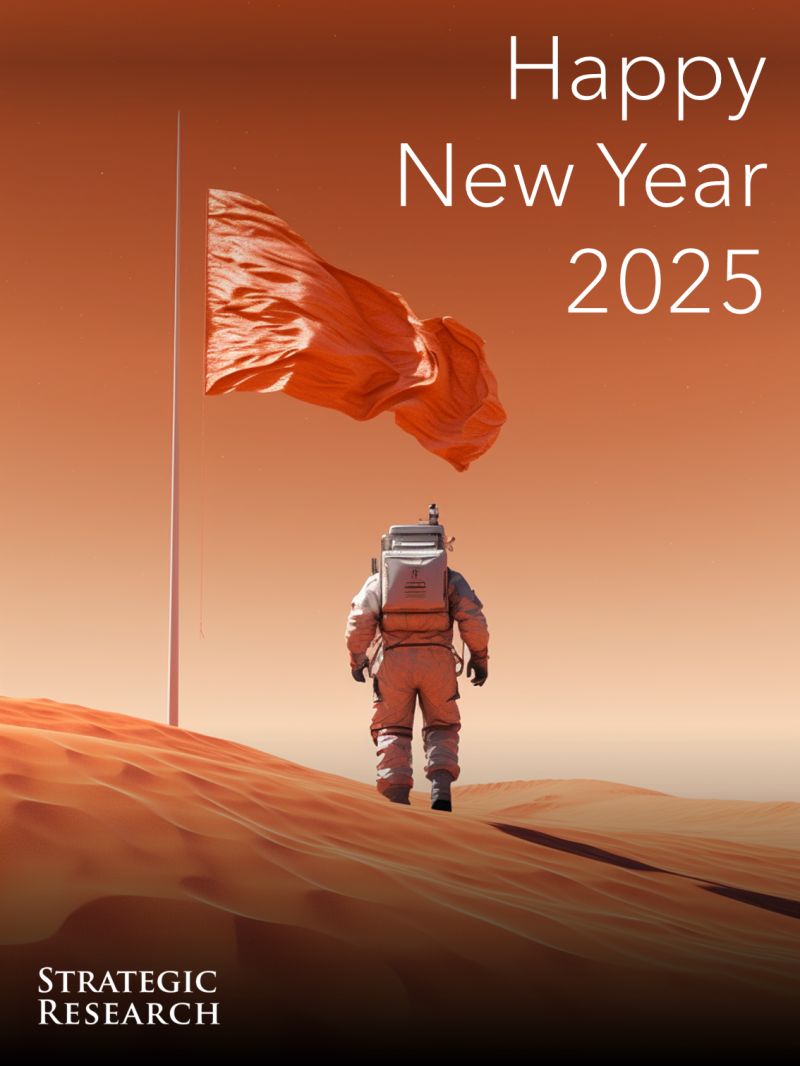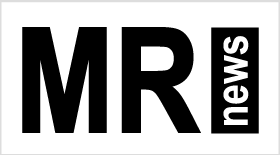The global travel industry has changed beyond recognition in the past 20 years,
thanks to factors such as the rise of low-cost airlines and democratization of access to information on destinations, hotels and activities.
Regular travel is no longer a privilege of the wealthy, and most people can afford to go on at least a couple of short breaks each year as well as a longer holiday – albeit with differing budgets and attitudes to prices. More recently, two phenomena have accelerated this trend.
The first is the rise of digital.
While the launch of low-cost airline booking websites at the end of the 1990s can be seen as a watershed in opening up the travel market, it is the sharp growth in the popularity of sites built on user-generated content and price comparison sites that has most transformed the market in recent years. This growth has been magnified by use of smartphones and apps that enable travel brands to be in contact with consumers 24/7.
The second phenomenon is the sharing economy,
which has really taken off since the beginning of the decade, and is now extending into all areas of the travel market: accommodation, travel and activities.

We constructed our research to measure these trends and the role we play within the scope of the Customer Journey for short breaks, digging deeper by creating a segmentation.
What we discovered was that the role of these trends varies enormously.
While digital now forms part of the Customer Journey for almost all consumers,
the extent to which it is used for Booking – generally considered the “moment of truth” for most travel companies – varies sharply from segment to segment.
A key finding was that the most frequent travelers are also the most likely to book transport and accommodation online – then share their experience during or after the trip. For packages, the picture is more homogenized, and less dominated by digital. Almost all segments booked packages online around half the time – leaving plenty of opportunity for alternatives such as visits to travel agents or phone bookings.
In terms of the sharing economy, a split emerged between the two countries,
with France much more open to the idea of peer-to-peer accommodation, transport and activities.
What is clear is that these two trends, and digital in particular, have already had a major impact on the short break Customer Journey in both countries – and with frequent travelers typically leading the way, they are likely to have some way to run.
MORE ON THE SHORT BREAK CUSTOMER JOURNEY
→ Short break preferences in France and the UK
→ A typical short break customer journey in the UK & France
→ Is the travel market consolidating or fragmenting?
→ A segmentation for the short break market
CONTACT
Ariane Griesbeck
METHODOLOGY
- Target: Men and women, residing in the UK and France, 15-65 years old, taken from national representative samples. Quotas set for gender, age, profession of interviewee, region, household size
- Sample sizes: France: 800 interviewees, UK: 800 interviewees
- Data collection methodology: Online
- Data collection dates: January 10th – 25th, 2017
- Questionnaire length: 21 minutes



